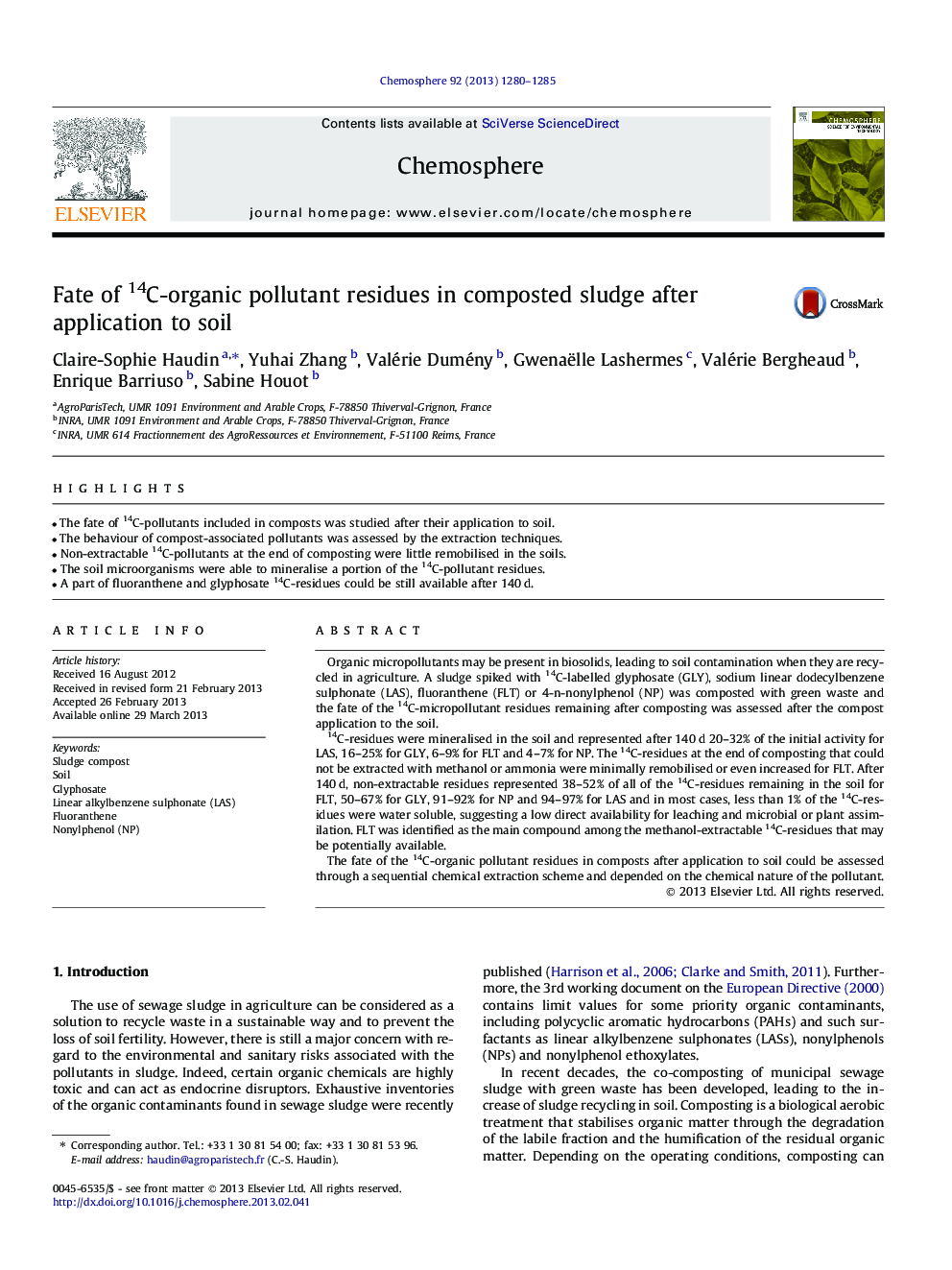| کد مقاله | کد نشریه | سال انتشار | مقاله انگلیسی | نسخه تمام متن |
|---|---|---|---|---|
| 4409131 | 1307464 | 2013 | 6 صفحه PDF | دانلود رایگان |

• The fate of 14C-pollutants included in composts was studied after their application to soil.
• The behaviour of compost-associated pollutants was assessed by the extraction techniques.
• Non-extractable 14C-pollutants at the end of composting were little remobilised in the soils.
• The soil microorganisms were able to mineralise a portion of the 14C-pollutant residues.
• A part of fluoranthene and glyphosate 14C-residues could be still available after 140 d.
Organic micropollutants may be present in biosolids, leading to soil contamination when they are recycled in agriculture. A sludge spiked with 14C-labelled glyphosate (GLY), sodium linear dodecylbenzene sulphonate (LAS), fluoranthene (FLT) or 4-n-nonylphenol (NP) was composted with green waste and the fate of the 14C-micropollutant residues remaining after composting was assessed after the compost application to the soil.14C-residues were mineralised in the soil and represented after 140 d 20–32% of the initial activity for LAS, 16–25% for GLY, 6–9% for FLT and 4–7% for NP. The 14C-residues at the end of composting that could not be extracted with methanol or ammonia were minimally remobilised or even increased for FLT. After 140 d, non-extractable residues represented 38–52% of all of the 14C-residues remaining in the soil for FLT, 50–67% for GLY, 91–92% for NP and 94–97% for LAS and in most cases, less than 1% of the 14C-residues were water soluble, suggesting a low direct availability for leaching and microbial or plant assimilation. FLT was identified as the main compound among the methanol-extractable 14C-residues that may be potentially available.The fate of the 14C-organic pollutant residues in composts after application to soil could be assessed through a sequential chemical extraction scheme and depended on the chemical nature of the pollutant.
Journal: Chemosphere - Volume 92, Issue 10, August 2013, Pages 1280–1285